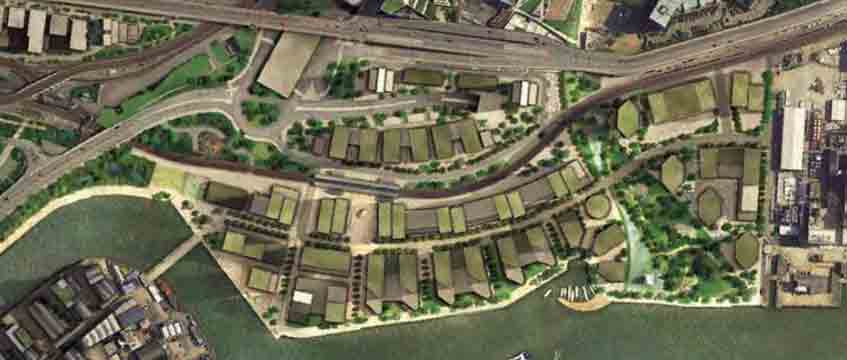In an interview five years ago, Max James, then chief executive of Quintain, made a couple of admissions that will serve him well in his new venture. He would, he said, watch Delancey’s nascent PRS efforts in Stratford closely. And he was, he added, keenly interested in residential opportunities in the doughnut beyond prime central London.
Recognition that new approaches to the residential sector present some of real estate’s biggest opportunities is universal today. In 2013 it wasn’t. James didn’t get the chance to fully realise his ambition at Quintain – he left in 2016 after the business was bought by LoneStar – but he may yet do so with his new venture.
James’s Silvertown Homes is teaming up with the GLA to build 7,000 homes at the Royal Docks, E16. Development of the 50-acre Thameside West site would make it one of the capital’s densest schemes.
He knows the area – the challenges and the opportunity – well. The site was previously held by Quintain and James was able to hold on to it after the LoneStar deal. It is also across the river from Greenwich Peninsula and Knight Dragon’s proposed 16,000-home development. It was James who sold Quintain’s holdings there to the Hong Kong developer, of course. And it is a site that will deliver a comparable number of homes to Wembley Park, a scheme also worked up by James during his time at Quintain to include rental.
But more than that, this scheme matters to the GLA and to London.
Next weekend marks the halfway point in Sadiq Khan’s mayoralty. In his 2016 manifesto, he said as mayor “my single biggest priority will be to build thousands more homes every year… our capital needs more than 50,000 new homes a year – yet the current mayor has built barely half that number.”
However, EG research last month showed that during his mayoralty, applications are well down, while refusals are up. At the same time, the GLA, through the draft London Plan, is proposing to increase the housebuilding target to 65,000 homes pa, roughly double the current rate.
There is clearly work to do in the second half of his term.
This halfway point also sees a shift in relations between the public and private sectors and how they work together in delivering homes of all tenures. Collaboration could be replaced once again by confrontation in many parts of the capital after next Thursday’s local elections.
Once the results are in, a revised development model for the capital must be conceived and implemented quickly. Without that, Khan will stand no chance of hitting his targets.
Success requires the mayor’s participation. His deputies Jules Pipe and James Murray have been engaged and accessible to this sector, but the same cannot be said of Khan himself. Once the outcome of these elections is known – and Khan’s own reselection as the Labour candidate for 2020 is (presumably) confirmed later this year – that may change. There is too much at stake for it not to.
■ As well as tackling all the issues raised above, we’ll be trying something new at next month’s EG London Residential Summit (where speakers include James Murray).
We’re asking a range of Londoners to submit videos with questions we can put to speakers at the event. With relations between developers and the person on the street fractured, we want to touch all bases in the debate.
To have your voice heard email me (Damian.wild@egi.co.uk) a short video (30-60 seconds, identifying yourself and asking a clear question). To attend the summit go to www.egi.co.uk/eg-events











